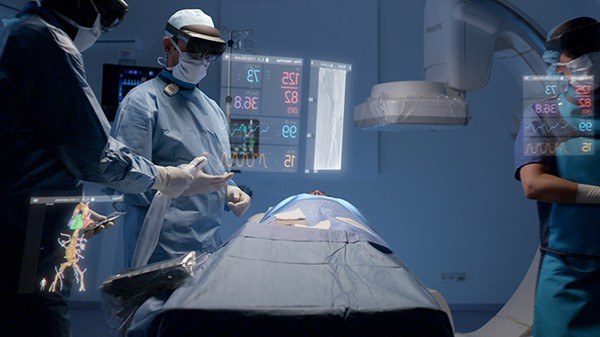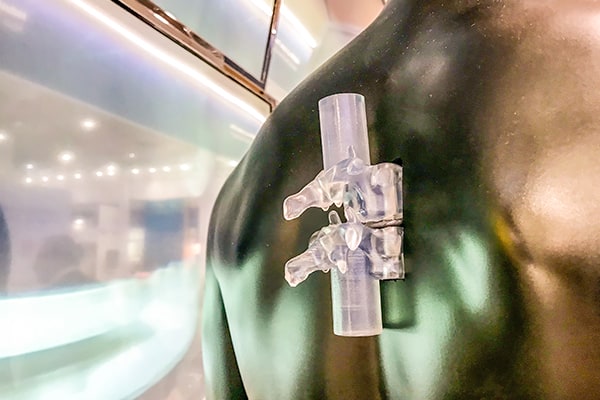EMERGING HEALTHCARE INDUSTRY TRENDS: #2 Hyper Personalization of Care
The COVID-19 pandemic is having a profound impact on almost every industry, but none as much as healthcare. Our ongoing blog series on emerging healthcare industry trends turns its attention this week to the hyper personalization of care, which is quickly moving to change the way that providers offer care to their patients. Here, we cover the underlying factors of this trend along with the nascent technologies that are driving it forward.
As the COVID-19 pandemic continues to change how every kind of business operates, we at THRIVE have decided to turn our attention to one space that’s been significantly affected — the healthcare industry.
For the next few weeks, we will be releasing an ongoing blog series outlining research we conducted over the past year that has informed our view of healthcare’s future trajectory and the significant trends that will shape care delivery.
Last week, we tackled The Shifting Point of Care. This week, we’ll be focusing on another care-related trend: Hyper-Personalized Care.
#2: The hyper personalization of care.
This trend has been a slow-simmering factor in the healthcare industry for a while now, evolving and increasing in importance as technology has advanced.
What is hyper personalization?
Hyper personalized medicine is the development of patient-specific, targeted, and tailored treatments offered to people based on more than just a diagnosis. By combining genomics, proteomics, metabolomics, and big-data-driven predictive analytics, precision medicine is now on a new level. The numbers behind this trend are pretty convincing, too: partly thanks to the Orphan Drug Act, the global personalized medicine market is expected to reach $3.18 trillion by 2025.
The key drivers of this trend are:
– Electronic health record adoption within systems: As patients’ complete health histories become instantly available at the beginning of care within healthcare systems, providers will have to make fewer guesses about their patients’ pasts, making more educated care decisions from the start.
– Availability of big data: Big data analytics in healthcare are a treasure trove of information for care providers that were, in the past, too large and complex for traditional technologies.
– Advances in machine learning and AI: Predictive models will continue to grow, as will their applications within healthcare, informing and even shaping how providers diagnose patients.
– The Orphan Drug Act: Since the Act was passed in 1983, the number of therapies for rare diseases has grown from 34 to over 730 in 2018. The growth has been exponential. One hundred and fifty of those therapies having been developed in the last two years alone, and this exponential growth model is expected to continue.
Why it matters

By letting physicians customize patient treatment plans and giving them access to a reference bank of patient-specific predictive analytics, the hyper personalization of care will become increasingly bespoke. Hyper personalized medicine will improve the patient experience and health outcomes – ultimately saving lives. This influx of personalized data isn’t necessarily all good, however. More data means more complexity to manage, and according to HIMSS, the volume of data is increasing year-on-year by 48%, which could create a burden on how design will help address this growing repository of potential insight and make it actionable.
The Opportunity: Hyper personalization of therapies
This one-to-one treatment approach is fueled by advances in everything from cell and gene therapy to individually 3D-printed surgical implants and bespoke drug manufacturing tailored for a single person. According to the Mayo Clinic, advances in genomics and clinical science, along with new technology advancements and device development, have created new opportunities allowing providers to tailor care for every patient — and these advances will only continue to come over the coming years.
Since these hyper personalized treatments and technologies are so new, the providers’ challenge will be increasing equitable access to them and creating a market for these patient-specific treatment models that haven’t been possible before. 3D assisted surgery is one example of this advancement already in the market. For example, Wright Medical’s Blueprint, a mixed-reality surgical planning tool that enables patient-specific accuracy and virtual implantation trials.
In partnership with VSP Solutions, Stryker is creating software allowing surgeons to visualize anatomical landmarks that combine with cutting and positioning guides to make the surgical suite virtual. Materialise also offers personalized, 3D printed patient-specific implants, enhancing the predictability of surgical outcomes.
Individualized medicine advancements have also created similar breakthroughs on a person-to-person level. Timothy Yu of Boston Children’s Hospital made a drug in just eight months to overcome a single patient’s genetic error responsible for a devastating neurological disorder. An approach like this is currently not available to most patients, but work in cancer tumor DNA sequencing may span across continents to identify the genomic mutations responsible for tumor growth, matching patients with the treatments that are most likely to help them.
Opportunity: Early disease detection and diagnostics
As predictive analytics advance, they play an increasingly important role in clinicians’ diagnostic strategies by increasing diagnostics’ accuracy, enabling personalized medicine, and allowing dynamic adjustments to adapt to discoveries and insights in real-time.
Predictive analytics is expected to be one of the fastest-growing new technologies in healthcare, with 89% of providers currently using or planning to use it in the next five years. IBM Watson, for example, offers analytics, simplifying the collection and organization of data through the power of AI and machine learning. And this technology isn’t just being applied to individual patients — entire patient populations can be studied using current and historical information to train data models efficiently and accurately.
Another example of hyper-personalization of care, but in this case, uses an algorithmic approach, is the AWARE Sepsis DART. By identifying risk factors early, this patient monitoring system can improve patient outcomes by preventing sepsis, a potentially fatal condition, and overwhelms providers with the amount of care involved in reversing the disease. This software lessens the load on providers and can be tracked via iPhone and iPad to determine if an individual is or could be experiencing sepsis.
Let THRIVE Help You Keep a Pulse on the latest Healthcare Industry Trends

The healthcare industry is an ever-evolving one, so it’s essential to stay updated on the most important and quickest rising trends. Check-in each week as we continue to uncover and explore the next 11 trends in this series, and look back at our previous trend blog, too.
THRIVE is an expert healthcare technology consultant with years of proven experience in this industry. If you think your business would benefit from our insight, contact us, and we will help you respond to industry changes to protect your business now and into the future.
RELATED POSTS
If you missed any of the previous posts in this blog series on the future trajectory of healthcare, you can find them here:
Week 1: The Shifting Point of Care
Week 3: Expanding the Continuum of Care
Week 4: Patient Empowerment
Week 5: Physician Empowerment
Week 6: Orchestrating Operating Room Efficiency
Week 7: Human-centered Healthcare Design
Week 8: Improving Medical Device UX Design
Week 9: Improving Contextual Design & Cognitive Empathy
Week 10: Enhanced Data Visualization Tools
Week 11: The Increasing Prevalence of Robot-Assisted Surgery
Week 12: Behavioral Design for Medical
Week 13: Humanized Patient-Provider Interactions





